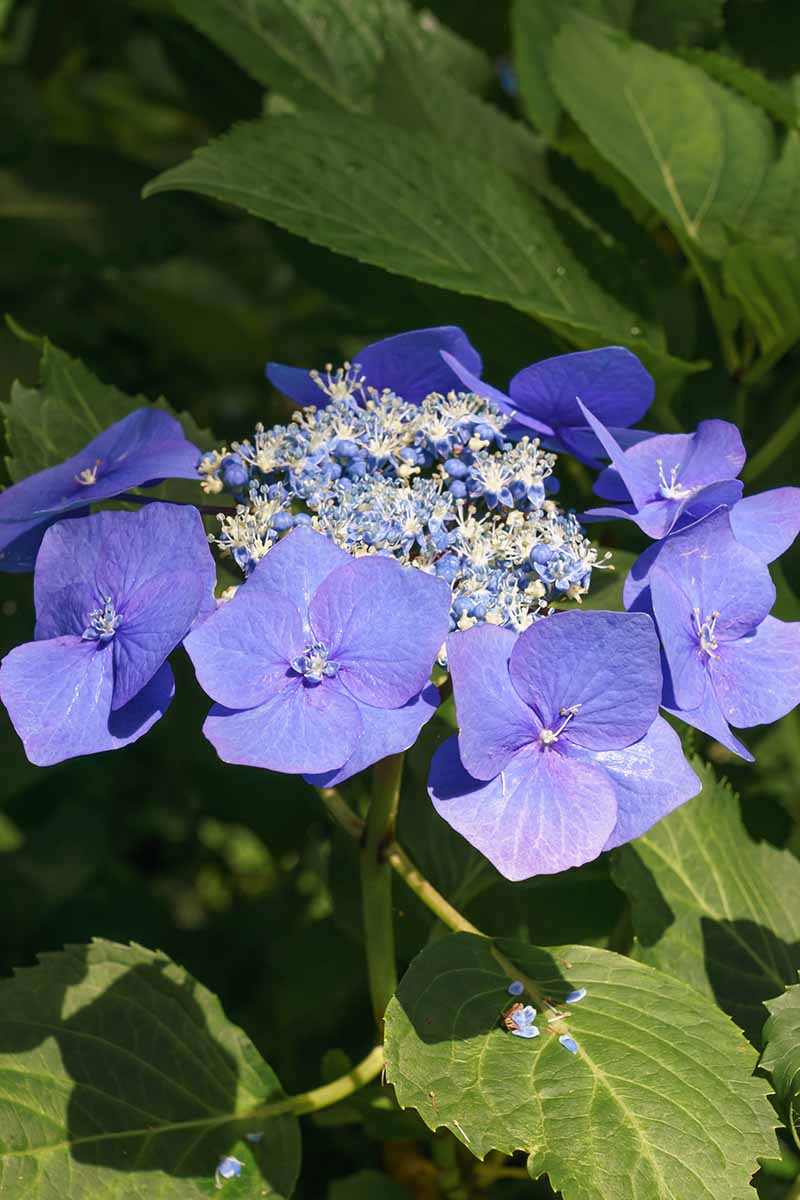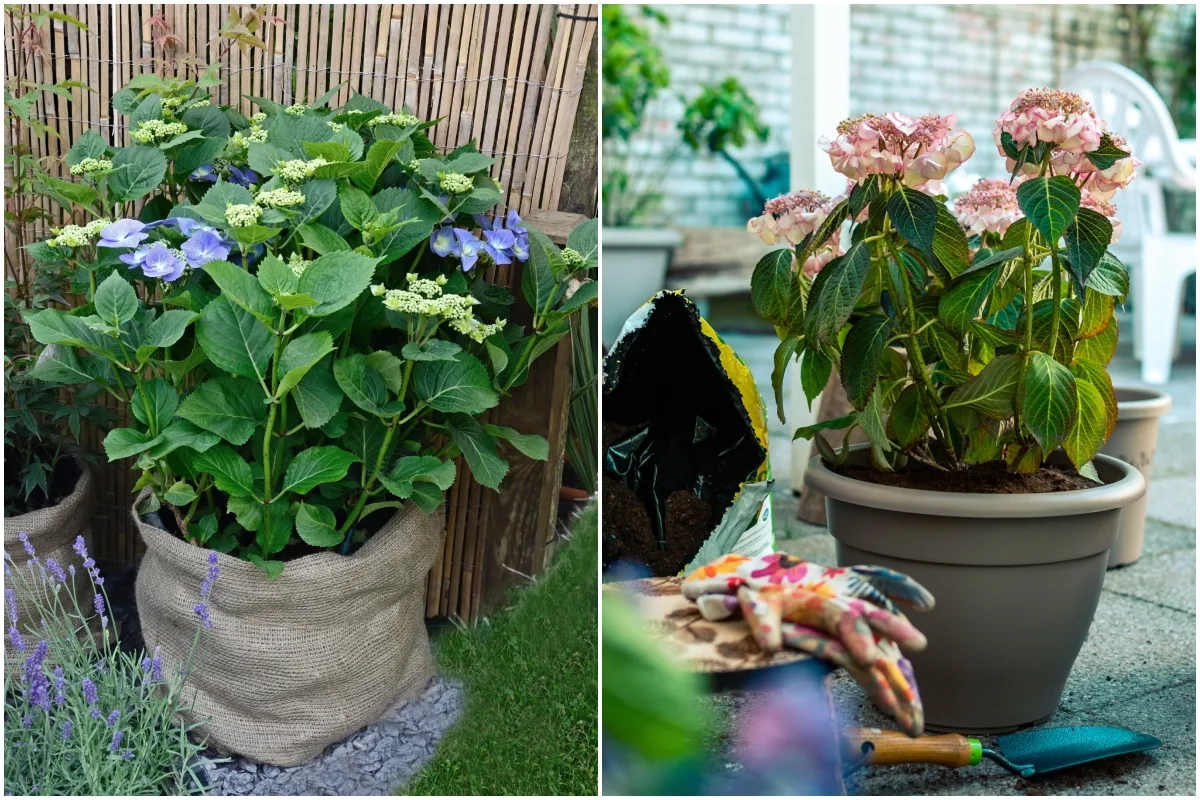The Blue Lacecap Hydrangea: A Stunning Bloom That's
The blue lacecap hydrangea is a beautiful and versatile shrub that can add a touch of elegance to any garden. With its delicate flowers and graceful shape, it's no wonder that this hydrangea is a popular choice for gardeners of all skill levels.
In this blog post, we'll take a closer look at the blue lacecap hydrangea, including its history, appearance, care requirements, and more. We'll also share some tips on how to choose the right variety for your garden and how to get the most out of your blue lacecap hydrangeas.
History of the Blue Lacecap Hydrangea
The blue lacecap hydrangea is native to Japan and Korea, where it has been cultivated for centuries. The first blue lacecap hydrangeas were brought to Europe in the early 19th century, and they quickly became popular garden plants. Today, there are dozens of different varieties of blue lacecap hydrangeas available, each with its own unique flower color and shape.
Appearance of the Blue Lacecap Hydrangea
Blue lacecap hydrangeas are deciduous shrubs that typically grow 3-6 feet tall and wide. They have dark green leaves that are 4-8 inches long. The flowers are borne in large, flat clusters that can reach 12 inches in diameter. The individual flowers are small and star-shaped, with a white or pale pink center surrounded by blue or pink petals. The color of the flowers can vary depending on the soil pH, with acidic soils producing blue flowers and alkaline soils producing pink flowers.
Care Requirements of the Blue Lacecap Hydrangea
Blue lacecap hydrangeas are relatively easy to care for. They prefer full sun to partial shade and moist, well-drained soil. They are also relatively drought tolerant once established. Blue lacecap hydrangeas should be fertilized in the spring with a balanced fertilizer. They may also need to be pruned in the early spring to remove dead or damaged branches and to shape the shrub.
How to Choose the Right Variety of Blue Lacecap Hydrangea
There are many different varieties of blue lacecap hydrangeas available, so it's important to choose the right one for your garden. Some factors to consider include the size of the shrub, the color of the flowers, and the hardiness zone. If you have a small garden, you'll want to choose a dwarf variety. If you want blue flowers, you'll need to plant your hydrangeas in acidic soil. And if you live in a cold climate, you'll need to choose a variety that is hardy in your zone.
How to Get the Most Out of Your Blue Lacecap Hydrangeas
To get the most out of your blue lacecap hydrangeas, it's important to provide them with the right care. Plant them in the right location, water them regularly, and fertilize them in the spring. You may also need to prune them in the early spring to remove dead or damaged branches and to shape the shrub. With proper care, your blue lacecap hydrangeas will bloom for many years to come.
Conclusion
The blue lacecap hydrangea is a beautiful and versatile shrub that can add a touch of elegance to any garden. With its delicate flowers and graceful shape, it's no wonder that this hydrangea is a popular choice for gardeners of all skill levels. If you're looking for a beautiful and easy-to-care-for shrub, the blue lacecap hydrangea is a great option.
If you're looking for a beautiful and easy-to-care-for shrub for your garden, look no further than the blue lacecap hydrangea. These delicate flowers are sure to add a touch of elegance to any space, and they come in a variety of colors to suit your taste.
Blue lacecap hydrangeas are native to Japan and Korea, and they thrive in USDA zones 5-9. They prefer partial shade and moist, well-drained soil. When choosing a location for your blue lacecap hydrangea, make sure it gets at least 6 hours of sunlight per day.
These shrubs are relatively low-maintenance, but they do require some regular care. Water them deeply once a week during the growing season, and fertilize them with a balanced fertilizer in the spring. In the fall, prune them back to about half their size to encourage new growth the following year.
If you're looking for more information about blue lacecap hydrangeas, I recommend visiting . This website has a wealth of information about these beautiful flowers, including their history, care requirements, and more. You can also find photos and illustrations of blue lacecap hydrangeas, as well as tips on how to plant and care for them in your own garden.
FAQ of blue lacecap hydrangea
- What is a blue lacecap hydrangea?
A blue lacecap hydrangea is a type of hydrangea that produces flowers with a central cluster of small florets surrounded by a ring of larger florets. The color of the flowers can vary depending on the acidity of the soil. In acidic soil, the flowers will be blue or lavender-blue. In alkaline soil, the flowers will be pink or red.
- How do I get my blue lacecap hydrangea to bloom blue?
The acidity of the soil is the most important factor in determining the color of blue lacecap hydrangea flowers. To get blue flowers, the soil pH should be between 5.0 and 6.0. You can test the pH of your soil using a pH testing kit. If your soil pH is too high, you can add sulfur to acidify the soil.
- How much sun does a blue lacecap hydrangea need?
Blue lacecap hydrangeas prefer partial shade. Too much sun can scorch the leaves and prevent the flowers from blooming. If you live in a hot climate, you may need to plant your blue lacecap hydrangea in a spot that gets morning sun and afternoon shade.
- How much water does a blue lacecap hydrangea need?
Blue lacecap hydrangeas need regular watering, especially during the first year after planting. Water deeply so that the water reaches the roots. Once the plant is established, it can tolerate some drought.
- How do I care for my blue lacecap hydrangea in the winter?
Blue lacecap hydrangeas are hardy in USDA zones 3-9. In colder climates, you may need to protect the plant from the cold by covering it with a burlap sack or evergreen boughs. You should also water the plant regularly during the winter months.
Image of blue lacecap hydrangea
5 different images of "blue lacecap hydrangea" from Pinterest:
- Blue lacecap hydrangea in full bloom. The flowers are a deep blue color and have a lacy appearance. They are arranged in clusters on top of the stems.

- Close-up of blue lacecap hydrangea flowers. The individual flowers are small and delicate, with a white center and blue petals.

- Blue lacecap hydrangea in a garden setting. The hydrangea is surrounded by other flowers and plants, including roses, lilies, and ferns.
- Blue lacecap hydrangea in a vase. The hydrangea is arranged in a vase with other flowers, such as lilies and roses.

- Blue lacecap hydrangea in a terracotta pot. The hydrangea is planted in a terracotta pot and placed on a patio or deck.

Post a Comment for "The Blue Lacecap Hydrangea: A Stunning Bloom That's"